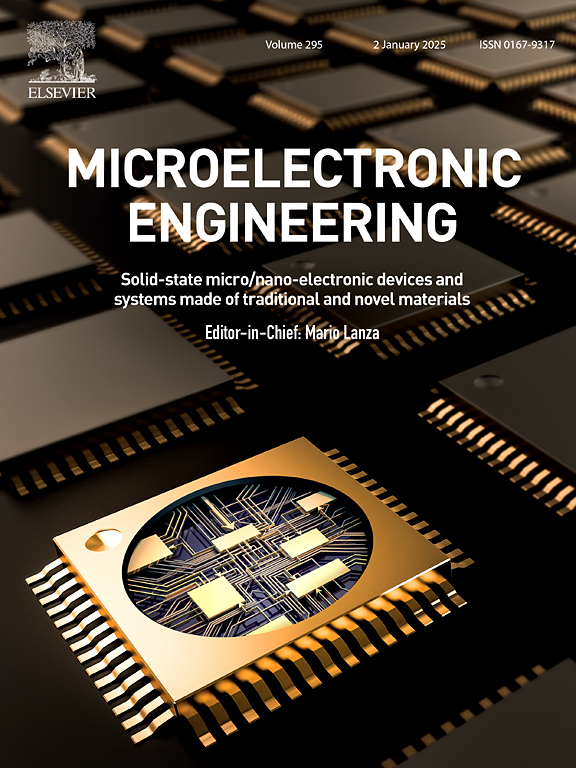面向碳化硅单片有源像素辐射传感器
IF 3.1
4区 工程技术
Q2 ENGINEERING, ELECTRICAL & ELECTRONIC
引用次数: 0
摘要
未来的对撞机实验需要新一代的跟踪探测器,具有优异的空间和时间分辨率,以及增强的辐射硬度。基于硅CMOS技术的单片有源像素传感器(MAPS)被证明可以提供良好的空间和时间分辨率,同时具有成本效益。然而,在辐射硬度方面,宽带隙半导体如碳化硅(SiC)具有优越的性能。在这项工作中,我们为基于SiC-CMOS技术的MAPS开发迈出了第一步。我们使用Fraunhofer IISB 2µm SiC-CMOS工艺设计了map电子读出链的第一级,即电荷敏感放大器(CSA)。电路仿真表明,在室温下,0.5pF ~ 4.5pF的输入电容可获得95e ~ 205e的等效噪声电荷。所获得的31kHz带宽主要受限于所使用的SiC-CMOS技术中mosfet的大尺寸。我们相信集成密度的进一步增加可以使SiC-MAPS成为硅基同类产品的令人信服的替代品。本文章由计算机程序翻译,如有差异,请以英文原文为准。
Towards silicon carbide monolithic active pixel radiation sensors
Future collider experiments demand a new generation of tracking detectors with excellent spatial and temporal resolution, along with enhanced radiation hardness. Monolithic active pixel sensors (MAPS) based on silicon CMOS technology are proven to provide fine spatial and temporal resolution while being cost-effective. In terms of radiation hardness, however, wide band-gap semiconductors such as silicon carbide (SiC) promise superior performance. In this work, we make a first step towards MAPS development based on SiC-CMOS technology. We used the Fraunhofer IISB 2 µm SiC-CMOS process to design the first stage in the electronic read-out chain of a MAPS, a charge-sensitive amplifier (CSA). Circuit simulations show that an equivalent noise charge of to is attainable for an input capacitance in the range of to at room temperature. The attained bandwidth of was primarily limited by the large size of the MOSFETs in the used SiC-CMOS technology. We believe that a further increase in integration density could make SiC-MAPS a compelling alternative to its silicon-based counterparts.
求助全文
通过发布文献求助,成功后即可免费获取论文全文。
去求助
来源期刊

Microelectronic Engineering
工程技术-工程:电子与电气
CiteScore
5.30
自引率
4.30%
发文量
131
审稿时长
29 days
期刊介绍:
Microelectronic Engineering is the premier nanoprocessing, and nanotechnology journal focusing on fabrication of electronic, photonic, bioelectronic, electromechanic and fluidic devices and systems, and their applications in the broad areas of electronics, photonics, energy, life sciences, and environment. It covers also the expanding interdisciplinary field of "more than Moore" and "beyond Moore" integrated nanoelectronics / photonics and micro-/nano-/bio-systems. Through its unique mixture of peer-reviewed articles, reviews, accelerated publications, short and Technical notes, and the latest research news on key developments, Microelectronic Engineering provides comprehensive coverage of this exciting, interdisciplinary and dynamic new field for researchers in academia and professionals in industry.
 求助内容:
求助内容: 应助结果提醒方式:
应助结果提醒方式:


